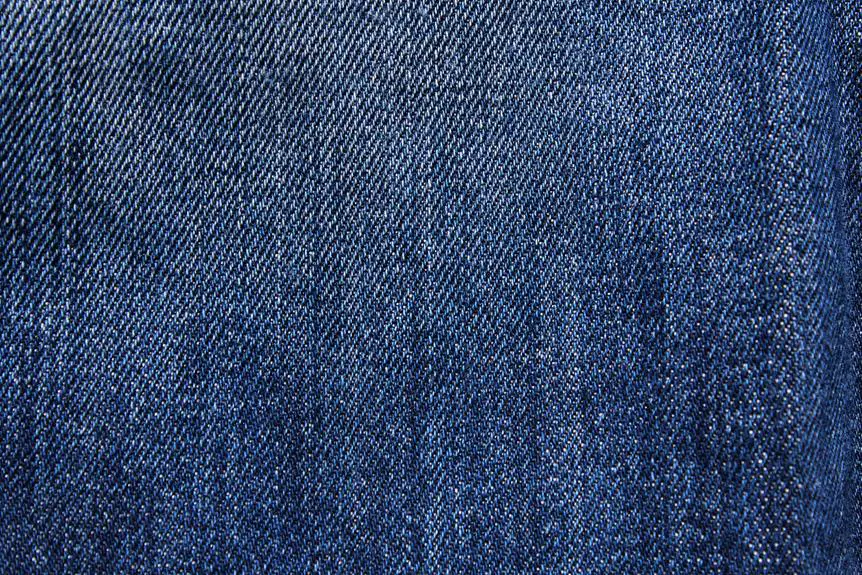Curious about the journey from cotton plant to classic denim? You've come to the right place.
This detailed guide will walk you through the intricate process of creating the beloved denim fabric.
From the fields where cotton is harvested to the dyeing and weaving techniques that give denim its unique look and feel, you'll gain a comprehensive understanding of every step involved.
Whether you're a denim enthusiast, aspiring designer, or simply eager to expand your knowledge, this guide is your key to unlocking the secrets of denim production.
So, buckle up and get ready to delve into the world of denim manufacturing.
Key Takeaways
- Cotton harvesting and ginning are crucial stages in denim fabric production, involving the removal of mature cotton bolls and separation of fibers from seeds.
- Fiber purification and spinning yarn play a significant role in creating high-quality denim fabric, ensuring the preservation of fiber properties and transforming fibers into strong, durable yarn.
- Indigo dyeing is a crucial step in denim fabric production, involving the immersion of fabric in an indigo solution to achieve the classic blue hue.
- Shuttle loom weaving, finishing processes, and quality control measures are essential for creating authentic denim fabric with the desired look, feel, durability, and sustainability.
Cotton Harvesting
Cotton harvesting involves the removal of mature cotton bolls from the plants using specialized equipment and labor. Cultivating cotton is a meticulous process that requires attention to detail. The fiber characteristics of cotton, including its length, strength, and fineness, are crucial factors in determining the quality of the harvested cotton.
Understanding the growth patterns of cotton plants is essential for optimizing the cultivation process and ensuring a successful harvest. Cotton plants typically produce bolls containing the fluffy white fibers used to make cotton fabric. Farmers carefully monitor the growth and maturation of these bolls to determine the ideal time for harvesting.
Once the cotton bolls have reached full maturity, they're harvested using machinery designed specifically for this purpose. This marks the beginning of the journey from the cotton fields to the production of denim fabric.
Cotton Ginning
Now, let's explore the essential process of cotton ginning.
This step involves the separation of cotton fibers from the seeds and the purification of the fibers.
Understanding the intricacies of cotton ginning will provide insight into the initial stages of denim fabric production.
Cotton Separation Process
To begin the process of creating denim fabric, start by separating cotton fibers from the seeds through a method known as cotton ginning.
Cotton ginning is a crucial step in cotton processing, as it involves separating the lint (fiber) from the seeds.
The first stage of ginning involves feeding the cotton into a machine called a gin, which removes the seeds from the cotton fibers.
Once separated, the cotton fibers are then cleaned and straightened to prepare them for spinning into yarn.
It's important to note that the quality of the cotton fibers, including their length, strength, and fineness, significantly impact the characteristics of the denim fabric produced.
This initial process of separating the cotton fibers sets the stage for the subsequent stages of denim production.
Fiber Purification Technique
Start by feeding the cotton into a machine called a gin, which removes the seeds from the fibers, preparing them for the next stage of denim production. The purification process is crucial for enhancing the quality of denim fabric. Here's what happens during cotton ginning:
- Separation of fibers from seeds
- Cleaning of fibers to remove dirt and debris
- Preservation of fiber properties
The cotton gin separates the valuable fibers from the seeds, ensuring that only the pure fibers are used in denim production. Through this process, the fiber properties such as strength, length, and fineness are preserved, resulting in high-quality denim fabric.
Understanding the intricacies of the fiber purification technique is essential for mastering the art of denim manufacturing.
Spinning Yarn
You take the cotton fibers and feed them into the spinning machine to create yarn for denim fabric. The spinning process is a crucial step in denim production, as it transforms the purified cotton fibers into strong, durable yarn suitable for weaving. As the fibers are fed into the spinning machine, they undergo a series of processes to align the individual fibers and twist them together to form yarn.
This yarn production is essential for creating denim fabric with the characteristic strength and versatility it's known for.
During the spinning process, the fibers are straightened, drawn out, and twisted into a continuous strand of yarn. This twisting action imparts strength to the yarn, making it suitable for weaving into denim fabric that can withstand the rigors of everyday wear. The quality of the yarn produced during this stage directly influences the quality and performance of the final denim fabric. Therefore, precision and attention to detail are paramount in ensuring that the yarn meets the necessary standards for denim production.
Understanding the intricacies of spinning yarn provides valuable insight into the craftsmanship involved in creating high-quality denim fabric.
Indigo Dyeing
When it comes to denim fabric, indigo dyeing is a crucial step in the production process. Understanding the indigo dye process and traditional dyeing techniques can provide valuable insight into the unique characteristics of denim.
Additionally, exploring the impact of indigo on denim fabric will shed light on the rich history and enduring popularity of this iconic material.
Indigo Dye Process
To create denim fabric, the indigo dye process involves immersing the fabric in a solution containing indigo, which gives it the classic blue hue. Understanding the indigo dye process is crucial for mastering denim production. Here are some key points to consider:
- Indigo Extraction: The process of obtaining indigo from plants, particularly the leaves of the indigofera plant, is essential for creating the dye solution.
- Chemical Composition: Indigo dye, with its distinct blue color, is a vat dye that requires a reduction process to become soluble and bond with the fabric.
- Dyeing Technique: The fabric is repeatedly dipped in the indigo dye solution and exposed to air to achieve the desired depth of color.
Mastering the indigo dye process is fundamental to achieving the iconic look and feel of denim fabric.
Traditional Dyeing Techniques
How exactly is indigo dyeing traditionally carried out in the production of denim fabric?
Traditional dyeing methods involve immersing the denim fabric repeatedly in a natural indigo dye bath. The indigo dye, derived from the leaves of the indigofera plant, oxidizes when exposed to air, creating the characteristic deep blue color associated with denim.
This dyeing process is typically carried out in large vats, where the fabric is dipped and then left to oxidize before being dipped again. The repeated dipping and oxidizing process allows the indigo dye to penetrate the fabric deeply, resulting in its signature fade-resistant properties.
However, it's important to note that traditional dyeing techniques, while producing the classic denim look, can have a significant environmental impact due to the chemicals and water usage involved in the process.
Indigo's Impact on Denim
Indigo dyeing significantly influences the overall characteristics of denim fabric, imparting its distinctive color and fade-resistant properties. When it comes to indigo's impact on denim, it's essential to understand its significance in the manufacturing process.
Here are a few key points to consider:
- Natural dyeing techniques: Indigo dyeing traditionally involves natural dyeing techniques, which have been refined over centuries to achieve the perfect hue and durability.
- Environmental impact: The use of natural indigo dyeing techniques can minimize the environmental impact compared to synthetic dyeing processes, aligning with sustainable and eco-friendly practices.
- Unique fading properties: Indigo dyeing gives denim its unique fading properties, creating beautiful, personalized wear patterns over time, making each piece of denim truly one-of-a-kind.
Understanding indigo's influence on denim production provides insight into the rich heritage and craftsmanship behind this timeless fabric.
Warp and Weft
The warp and weft are the two basic components used in weaving denim fabric. Understanding these foundational elements is crucial to comprehending the fabric construction and textile production process. The warp refers to the threads that run vertically on the loom, while the weft denotes the horizontal threads woven over and under the warp to create the fabric. This weaving method is essential in creating the characteristic strength and durability of denim.
| Warp | Weft | Purpose |
|---|---|---|
| Vertical threads | Horizontal threads | Create fabric structure |
| Tightly stretched | Woven over and under warp | Reinforce fabric strength |
| Typically indigo-dyed | Various colors | Contribute to denim's aesthetic |
The warp and weft threads are meticulously intertwined using specific weaving methods to produce denim fabric. Understanding the thread formation and weaving techniques enables you to appreciate the intricate process of denim production. The interplay between the warp and weft threads not only determines the visual appearance of denim but also influences its strength and texture. Mastering the art of weaving the warp and weft is essential in producing high-quality denim fabric.
Shuttle Loom Weaving
Shuttle loom weaving reinforces the fabric structure by intricately interlacing the tightly stretched warp and weft threads, contributing to the characteristic strength and durability of denim. This traditional method has seen significant innovations, blending with modern weaving techniques to enhance efficiency and quality.
Here's what you should know:
- Shuttle Loom Innovations: Advancements in shuttle loom technology have led to increased automation, allowing for more intricate patterns and faster production while maintaining the integrity of the fabric.
- Modern Weaving Techniques: Incorporating modern techniques such as air jet and projectile weaving has revolutionized the denim industry, offering higher production rates and more diverse fabric options without compromising on the durability and ruggedness denim is known for.
- Quality Assurance: Despite the integration of modern techniques, shuttle loom weaving remains essential for preserving the authentic denim texture and strength, ensuring that each yard of fabric meets the highest standards of quality.
Understanding the interplay between traditional shuttle loom weaving and modern innovations provides valuable insight into the meticulous craftsmanship behind every piece of denim fabric.
Finishing Processes
After weaving, you typically subject the denim fabric to various finishing processes to enhance its appearance, texture, and performance. These processes play a crucial role in determining the final look and feel of the denim, as well as its durability and sustainability. Below is a table highlighting some common finishing processes used in denim production:
| Finishing Processes | Description | Benefits |
|---|---|---|
| Fabric Softening | Involves treating the denim with softeners to improve its feel and make it more comfortable for wear. | Enhances comfort and wearability. |
| Garment Distressing | Techniques like sanding, whiskering, and grinding are used to create worn-out, vintage looks in the denim, adding character and style. | Creates unique, fashionable designs. |
| Sustainable Finishes | Utilizes eco-friendly treatments and processes, such as ozone or laser technology, to reduce water and chemical usage, minimizing environmental impact. | Promotes sustainability and ethical production practices. |
These finishing processes not only cater to consumer preferences but also align with the industry's increasing focus on sustainable practices. Understanding these processes enables you to appreciate the craftsmanship behind every pair of denim jeans while making informed choices about the products you purchase.
Quality Control
To ensure the denim fabric meets high standards, you oversee a series of rigorous quality control checks throughout the production process. This allows you to maintain the material standards and ensure that the denim fabric produced is of top-notch quality.
The inspection process involves several key steps:
- Raw Material Inspection: You meticulously inspect the quality of the raw denim material, checking for any defects or irregularities before it's used in the production process.
- In-Process Quality Checks: Throughout the manufacturing stages, you conduct regular quality checks to monitor the fabric's color consistency, strength, and overall integrity.
- Final Product Evaluation: Once the denim fabric is ready, a final inspection is carried out to assess the overall quality, ensuring that it meets the required standards before being released for distribution.
Frequently Asked Questions
What Are Some Common Uses for Denim Fabric Besides Making Jeans?
Denim fabric, a versatile material, finds use beyond jeans in home decor, workwear, and the fashion industry. Understanding denim production and sustainable practices can help you appreciate its diverse applications and environmental impact.
Are There Any Environmental or Ethical Concerns Associated With Denim Production?
When it comes to denim production, there are significant environmental impacts to consider, such as water usage and chemical pollution. Ethical sourcing is also a concern, as it relates to fair labor practices and worker safety.
How Has Denim Production Evolved Over Time and What Are Some Modern Innovations in the Industry?
Denim production has evolved significantly over time, with sustainable innovations now shaping the industry. Modern techniques prioritize environmental impact and ethical labor practices, making denim manufacturing more sustainable and responsible than ever before.
What Are Some Potential Challenges or Obstacles in the Denim Production Process?
When it comes to denim production, challenges in the supply chain, quality control, and waste management are common. It's important to address these obstacles to ensure a sustainable and efficient manufacturing process.
Are There Any Specific Regulations or Standards That Denim Manufacturers Have to Adhere to in Terms of Quality and Sustainability?
As a denim manufacturer, you must adhere to strict quality standards and sustainability regulations. These ensure that your products meet environmental and ethical criteria. By following these guidelines, you can contribute to a more responsible and transparent denim production process.
- What’s the Fabric That Feels Like Suede but Resists Water? - July 12, 2025
- How to Get Pen Out of Faux Suede - July 12, 2025
- Where to Buy Green Suede Fabric - July 12, 2025







